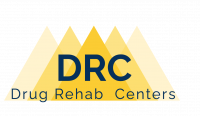Oxycodone: Side Effects, Addiction Risk, & Withdrawal

Oxycodone is a prescription opioid that’s commonly prescribed for managing moderate to severe pain. Oxycodone is the active component in medications like OxyContin and Percocet which have fueled the U.S. opioid epidemic.
When used short-term with medical guidance, oxycodone can provide safe and effective pain relief. Nevertheless, it carries the potential for serious health consequences and poses a high risk of danger if misused. Read on to learn more about the side effects of this opioid painkiller and discover how to connect with compassionate and evidence-based oxycodone addiction treatment.
What Is Oxycodone?
Oxycodone is a semi-synthetic opioid that’s frequently prescribed for pain relief. It works by attaching to mu-opioid receptors in the body, altering the way pain signals are communicated between the brain and body.
Medications containing oxycodone are available under various brand names, such as:
- OxyContin
- Percocet
- Roxicodone
- Xtampza ER
DEA (United States Drug Enforcement Administration classifies oxycodone as a Schedule II controlled substance. Drugs under this schedule have recognized medical applications alongside a strong potential for abuse, dependence, and addiction.

Oxycodone Side Effects
Possible side effects from taking oxycodone may include:
- Drowsiness
- Nausea and vomiting
- Dry mouth
- Itching
- Dizziness
- Weakness
- Excessive sweating
- Pain in the stomach
- Headaches
- Constipation
- Slowed respiration
Misusing oxycodone carries a high risk of overdose, which can manifest through various signs and symptoms. These may include:
- Slowed or stopped breathing
- Severe sleepiness
- Inability to wake up
- Unresponsive body
- Blue tinge to skin
- Vomiting episodes
- Making choking or gurgling noises
- Pinpoint pupils
Is Oxycodone Addictive?
Oxycodone is highly addictive. Like all potent opioids, this pain medication has a strong potential for abuse and dependence. The drug works by binding to opioid receptors in the brain, which not only blocks pain but can also trigger a release of dopamine, prompting feelings of euphoria. This rewarding sensation may contribute to the development of psychological dependence.
Regular use, even as prescribed, can lead to the formation of physical tolerance, where higher doses are needed to achieve the same pain-relieving effects. Over time, this can evolve into physical dependence, characterized by the presentation of withdrawal symptoms upon discontinuation. When oxycodone is used in ways not prescribed by a doctor – such as taking larger doses, using it more frequently, or using it for non-medical reasons – the risk of addiction increases significantly.
Due to its addictive nature, oxycodone should be used with careful monitoring by a healthcare professional, ideally as part of a broader pain management plan that includes alternatives to opioids when possible.
Oxycodone Withdrawal Symptoms
Oxycodone withdrawal signs and symptoms may differ in presentation and duration from person to person. Symptoms commonly encountered during oxycodone detox may include:
- Intense cravings for the drug
- Anxiety and restlessness
- Stomach cramps
- Diarrhea
- Muscular pains and aches
- Disruptions in sleep patterns
- Accelerated heart rate
- Elevated blood pressure
- Feelings of nausea
- Episodes of vomiting
Cravings for oxycodone are a significant factor contributing to the risk of relapse, which is when an individual resumes using oxycodone after a period of abstinence. Effectively managing these cravings is one of the most effective relapse prevention strategies.
Relapse not only undermines recovery efforts but also poses additional risks – after withdrawal, the body’s tolerance to oxycodone decreases, so resuming use could provoke an accidental overdose, as even small amounts may now produce potentially lethal effects on the body.
Treatment for Oxycodone Withdrawal
SAMHSA (Substance Abuse and Mental Health Services Administration) recommends that individuals undergoing opioid withdrawal should receive around-the-clock medical care due to the risks involved and the intense discomfort that can accompany withdrawal. Those withdrawing from opioids may face complications like severe dehydration, uncontrollable pain, exacerbation of anxiety or pre-existing heart conditions, or even suicidal tendencies. Medical detoxification provides supervision, support, and access to medications, ensuring the person’s safety and comfort throughout this demanding process.
Various medications may be used to alleviate withdrawal symptoms during detox, including:
- Methadone: An opioid-based medication that eases withdrawal symptoms and reduces cravings.
- Buprenorphine: Another opioid-based medication that mitigates withdrawal symptoms and curbs cravings.
- Clonidine: Although not FDA-approved specifically for withdrawal, clonidine may be used off-label to alleviate withdrawal symptoms during detox.
- Lofexidine: A non-opioid medication which can help lessen physical withdrawal symptoms.
After completing detox, individuals typically engage in a range of therapies and treatments as part of an integrated treatment plan. Transitioning into rehab immediately after detox is normally required to address the issues underpinning addiction. There are two main types of oxycodone rehab:
- Inpatient rehab: Residential treatment involves living at the facility throughout the program, with access to continuous care and a variety of personalized therapies. This option suits those with severe addictions, co-occurring mental health disorder, or volatile home environments.
- Outpatient rehab: This treatment model allows people to visit the rehab center for therapy sessions, returning home daily. Outpatient rehab can be advantageous for those with strong home support systems and reliable transportation.
Ongoing medication-assisted treatment may also be instrumental in helping people maintain sobriety and prevent relapse after the initial detox phase.
FAQs
What does oxycodone do?
Oxycodone is a potent opioid medication that’s used to treat moderate to severe pain. It works by altering the way in which the brain and central nervous system respond to pain, providing relief by reducing discomfort.
Are the side effects of oxycodone dangerous?
The side effects of oxycodone can be dangerous and vary in severity. Dangerous effects of oxycodone may include addiction, respiratory depression, and life-threatening overdose.

Get Treatment for Oxycodone Addiction at Drug Rehabs Centers
Oxycodone addiction can be aggravating and highly disruptive, but it’s also treatable. If you feel that you need help overcoming opioid use disorder but have no idea where to turn, reach out to Drug Rehabs Centers.
We can help you find detox centers in California to help you begin your recovery the right way with supervised oxycodone detoxification. Detox addresses the issue of physical dependence on opioids, but you’ll need ongoing treatment to tackle the psychological component. We can refer you to inpatient rehabs and outpatient treatment centers throughout the state.
Call (844) 739-2005 today and begin your recovery from oxycodone addiction right away.
